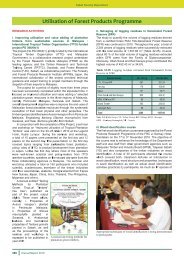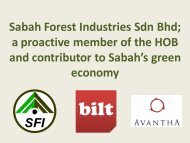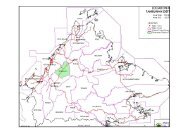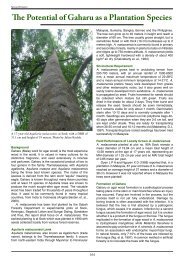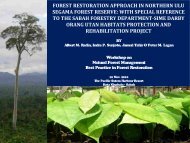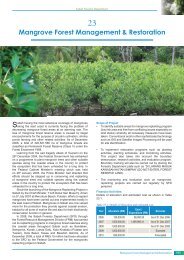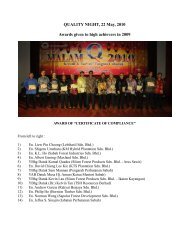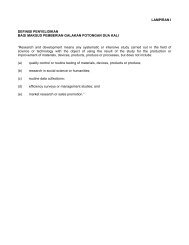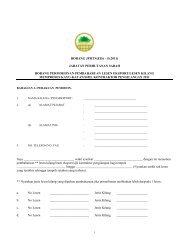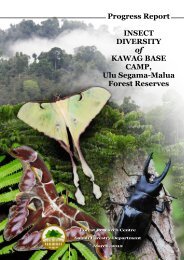Forest Management Plan - Sabah Forestry Department
Forest Management Plan - Sabah Forestry Department
Forest Management Plan - Sabah Forestry Department
Create successful ePaper yourself
Turn your PDF publications into a flip-book with our unique Google optimized e-Paper software.
APPENDIX CStandard Operating ProceduresThe <strong>Sabah</strong> <strong>Forest</strong>ry <strong>Department</strong> (SFD) has initiated a policy to pursue certification bymeeting the requirements of FSC as well as national standards in its management systemsfor <strong>Sabah</strong>. To ensure that its operations are in line with FSC requirements the SFD hasdeveloped a series of Best Practice Guidelines for forest management in 2008 that hasbeen adopted into procedures for use in FMU 19A and FMU 17.Procedure #2: Social Assessment:Social Impact Assessment (SIA) in forestry is a requirement to identify localcommunities and indigenous groups that are directly associated with the managementunit whereby forestry operations can have a significant impact to their livelihood. TheSIA needs to identify potential negative and positive impact of the operations anddefine means to mitigate any negative impacts to each of the communities. The SIA alsoneeds to define the current status of the communities in respect to basic needs such ashealth, education, infrastructure / access, livelihood, etc that ca form the basis of asocial development program.Procedure #3: Harvest Tree MappingThis procedure covers boundary delineation; tree marking and identification, directionalfelling, road (skid trail, feeder road and secondary road) alignment, road side cuttings,identification of culverts, bridges, and seasonal stream crossings and LDCCY corridoralignment.Procedure #4: Harvest <strong>Plan</strong>ning GuidelineReduced Impact Logging (RIL) begins with planning harvesting activities to extracttimber on a sustained yield basis while causing minimal damage to the residual foreststand. The concept of RIL is to provide an economic means to extract timber throughidentification of the trees to be harvested and planning how to extract the logs whilereducing the environmental and social impacts of the harvesting operations. RIL shouldhave a target to minimize total damage to the residual stand to less than 30%. There are3 main methods of extraction that can be used for Reduced Impact Logging in FMU 19A& FMU 17A: crawler tractor, long distance cables system or helicopter.The Comprehensive Harvest <strong>Plan</strong> (CHP) acts as a small-scale management plan specific toa harvest block. The CHP document must adequately describe the current forestresources, environmental and potential social issues associated within the harvest area.The CHP needs to identify all trees to be harvested and define the activities to protect



